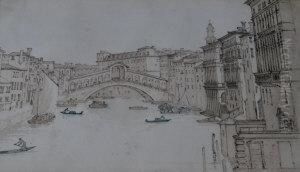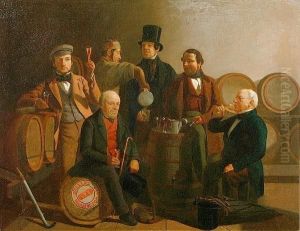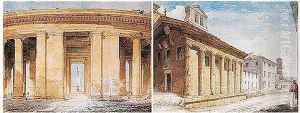John Davies Paintings
John Davies is a prominent British sculptor born in 1946. His work is renowned for its exploration of the human condition, often focusing on the figure and employing a variety of materials including fiberglass, wood, and paper. Davies' sculptures are distinguished by their detailed, life-sized representations of human figures, which are both realistic and haunting, capturing a sense of vulnerability and introspection.
Davies grew up in Cheshire, England, and his interest in art emerged at a young age. He attended the Manchester College of Art and Design from 1963 to 1967, followed by further studies at the Slade School of Fine Art, University College London, from 1967 to 1971. His education laid a solid foundation in both traditional techniques and the conceptual underpinnings of contemporary art, which would deeply influence his later work.
Throughout the 1970s and 1980s, Davies established himself as a significant figure in the British art scene. His early work often incorporated elements of performance and installation, but he gradually focused more on sculpture. His figures, sometimes isolated and other times grouped in narrative tableaux, reflect a deep engagement with themes of memory, identity, and the passage of time. Davies' ability to imbue inanimate materials with a sense of life and emotional depth is a hallmark of his practice.
Davies' work has been exhibited widely in the UK and internationally, including solo and group exhibitions in prestigious galleries and museums. He has also been the recipient of several awards and honors for his contributions to the field of visual arts. Despite his success, Davies has maintained a focus on the intimate, personal aspects of human existence, steering clear of overt political statements in favor of a more universal exploration of the human experience.
John Davies continues to work and reside in England, where he remains an influential figure in contemporary sculpture. His ongoing creative output and his dedication to exploring the human form have ensured his place in the narrative of British art history.


